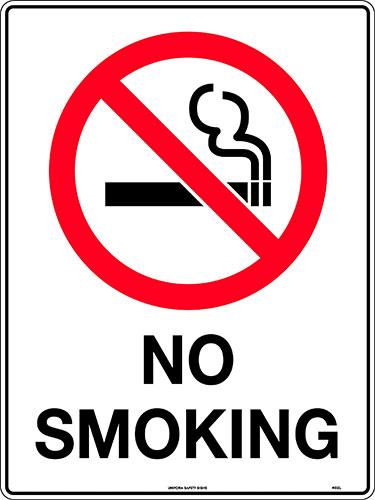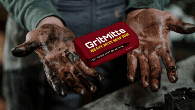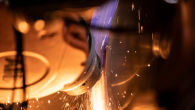We have a look at the safety signs you need to display at your workplace in order to meet WHS requirements and keep people safe.
As an added bonus, we will also delve into the psychology behind the choice of colours used in the safety signs.
The Australian Standard covering safety signs is AS1319-1994.
This standard sets out the seven categories of safety signs, which include Prohibition, Mandatory, Restriction, Danger, Warning, Emergency Information and Fire.
AS1319 does not specify a required material or size for a safety sign, but does stress that the type of safety sign used should be fit for purpose, and that employees should be informed of that purpose.
While there are no specifications for size or material, it is recommended that, when lighting is good, the pictograms should be 15mm and uppercase letters be 5mm for every one metre of viewing distance.
For example, if your workers are viewing a well displayed sign in a well-lit area from a distance of 10 metres, the pictogram should be at least 150mm (15cm), while the uppercase letters should be a minimum of 50mm (5cm).
However, in an area that is not well lit, it is recommended that the size of the sign should be increased by at least 50%.
Where practical, safety signs should be mounted close to the observer's line of sight in the vertical plane. They should also be located against a contrasting background, and visual obstructions in front of them should be minimised.
Additionally, for maximum effectiveness, safety signs should be maintained in good condition, kept clean and well illuminated.
The 7 Safety Sign Categories
Prohibition Safety Signs
Prohibition signs show an action or activity that is not allowed. Its shape is a red circle with a diagonal red slash through it. This is usually placed over a black pictograph, like the pictured example of a cigarette, to indicate what specific activity it refers to. The background is white and any text is black.
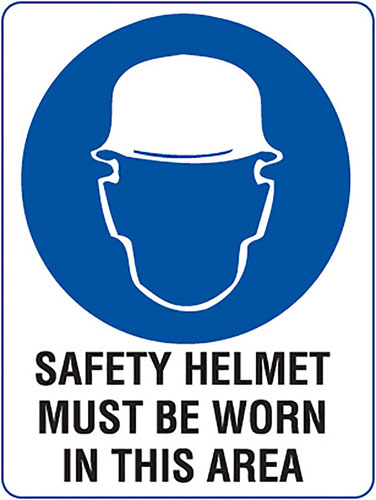 Mandatory Safety Signs
Mandatory Safety Signs
Mandatory signs show activities or instructions that must be carried out on the worksite. Its shape is a blue circle, with a white pictograph, for example a hard hat, which indicates wearing hard hats is mandatory. The background is white and any text is black.
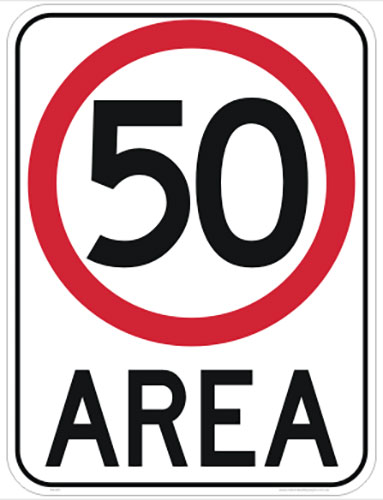 Restriction Signs
Restriction Signs
Restriction signs place a limit on an activity or use of a facility. AS1319-1994 does not give any specific examples of this type, but notes that speed limit signs for forklifts or parking areas, as given in AS1742.1, are often needed in the workplace.
Its shape is a red circle, but without the diagonal slash found in prohibition signs. This also would have a black pictograph inside the circle, a white background and any text in black.
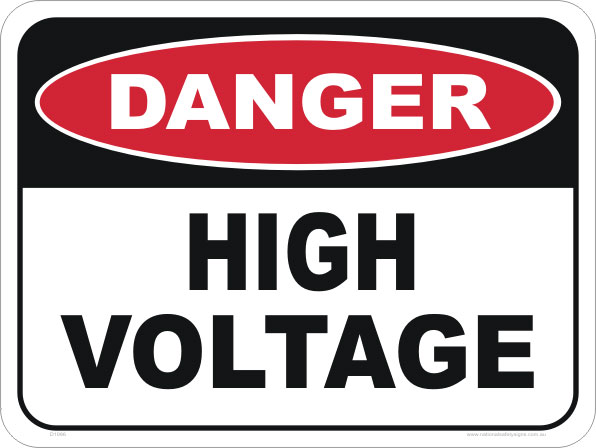 Danger Signs
Danger Signs
Danger signs warn of hazards that are likely to be life threatening. Its shape is the word DANGER in white on a red oval, which is surrounded by a black rectangle. This usually forms a heading for a white background on the sign. Alternatively, it may occupy the left side of a horizontal sign. Any text is in black. A common example is 'HIGH VOLTAGE'.
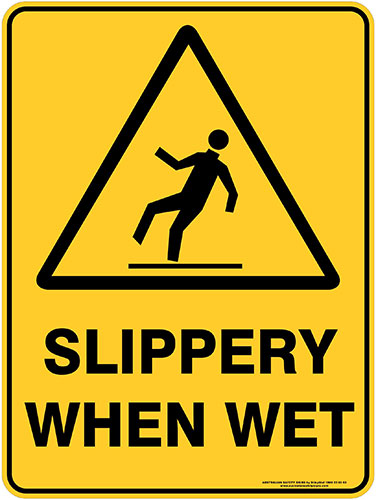 Warning Signs
Warning Signs
Warning signs warn of hazards that may cause harm, but are not necessarily life-threatening. A black pictograph that symbolises the hazard appears inside a yellow triangle. The sign background is yellow with any text in black. A typical example is 'Slippery When Wet’'.
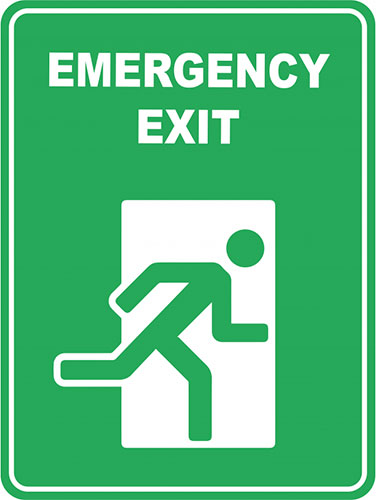 Emergency Information Signs
Emergency Information Signs
Emergency information signs show the location of, or directions to, emergency related areas such as exits, safety equipment or first aid. The background is green and any text or pictograph is white.
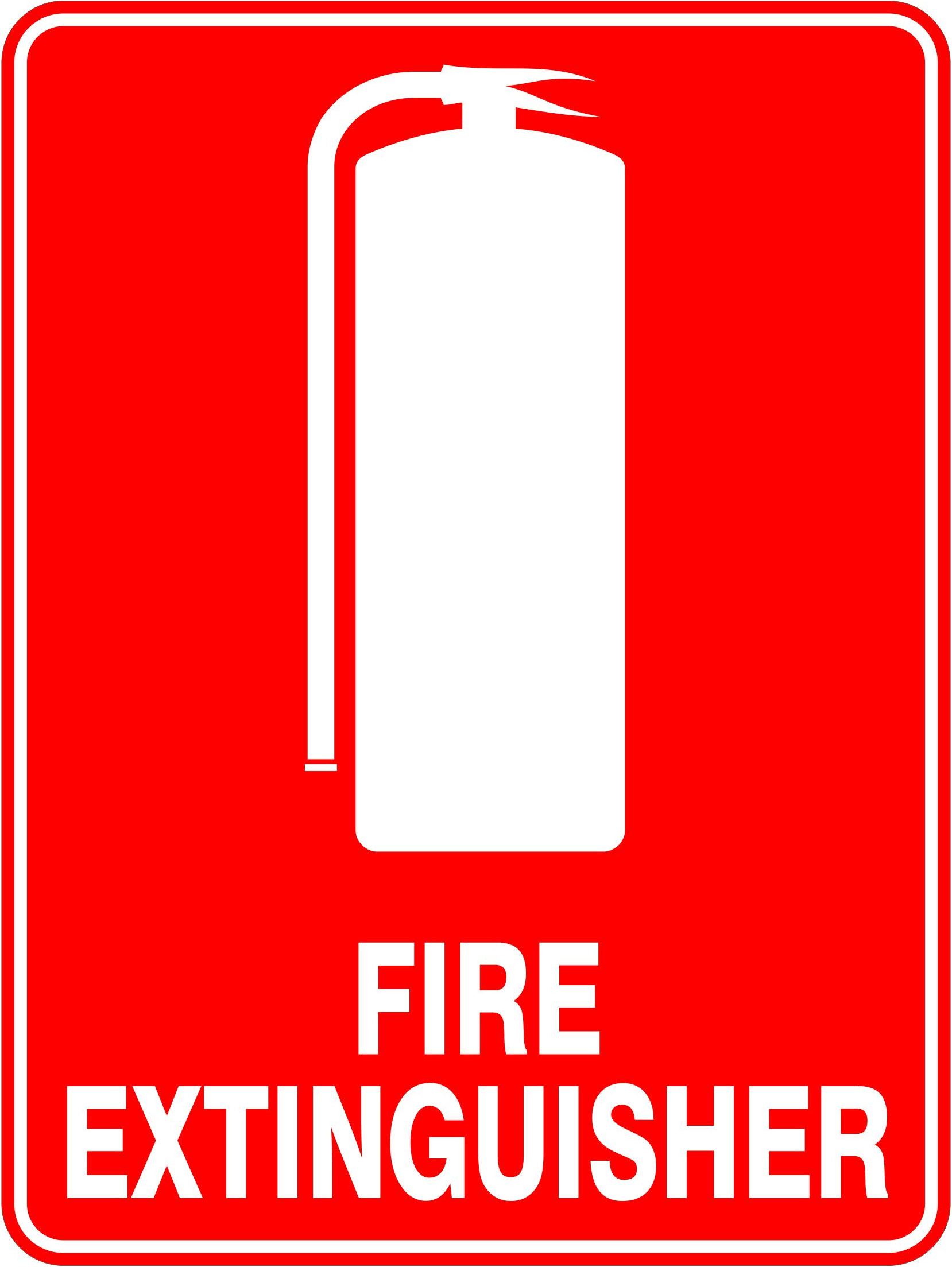 Fire Signs
Fire Signs
Fire signs advise the location of fire alarms and fire-fighting equipment. The background is red and any text or pictograph is white.
Why use the above colours?
Colours have a psychological and behavioural influence on people, making some colours perfect for particular uses.
The AS 1318-1985 SAA Industrial Safety Colour Code defines the use of red, yellow, green and blue for marking physical hazards and equipment location. These codes create consistency across workplaces, resulting in an expectation of their use for workers and visitors alike.
Red:
The Safety Colour Code chose red to indicate danger, locate firefighting equipment and identify emergency stop controls. White lettering, stripes or edging may be added, however red should be the basic or background colour on the sign.
Studies have found that red in Western societies is associated with danger and negativity. It has also been found to motivate avoidance. This makes red the perfect choice to lead people to make choices based on avoiding the possibility of negative or dangerous consequences.
Yellow:
Yellow is used to highlight locations where caution should be used. It’s a very dominate colour that demands attention.
Some shades of yellow are considered to be the harshest to the eye, as well as the most visible colour in darkness.
And while red-green colour-blindness is relatively common, blue-yellow colour-blindness is extremely rare, making yellow a logical choice to use as a cautionary colour for the widest cohort of people.
Green:
Green, used with white, indicates the location of safety and first aid equipment, except for firefighting equipment.
Green is associated with well-being, is highly visible, and is considered to be less anxiety-provoking than red and yellow. It has been strongly associated with healthcare for centuries, making it the ideal colour to represent safety and first aid.
Blue:
Blue is used as the base or background colour in signage that signifies mandatory instructions to be followed.
Blue is associated with dependability and trustworthiness, which is why we see so many corporate colours using it.
When used in signage, the aim is for people to instinctively trust the instructions.
Where to get safety signs?
BST Group has an extensive supply of Australian standard safety signs. All comply to AS1319-1994. Get in contact today with a friendly staff member who will guide you to the signs your business must have. Check out some of our range here.

